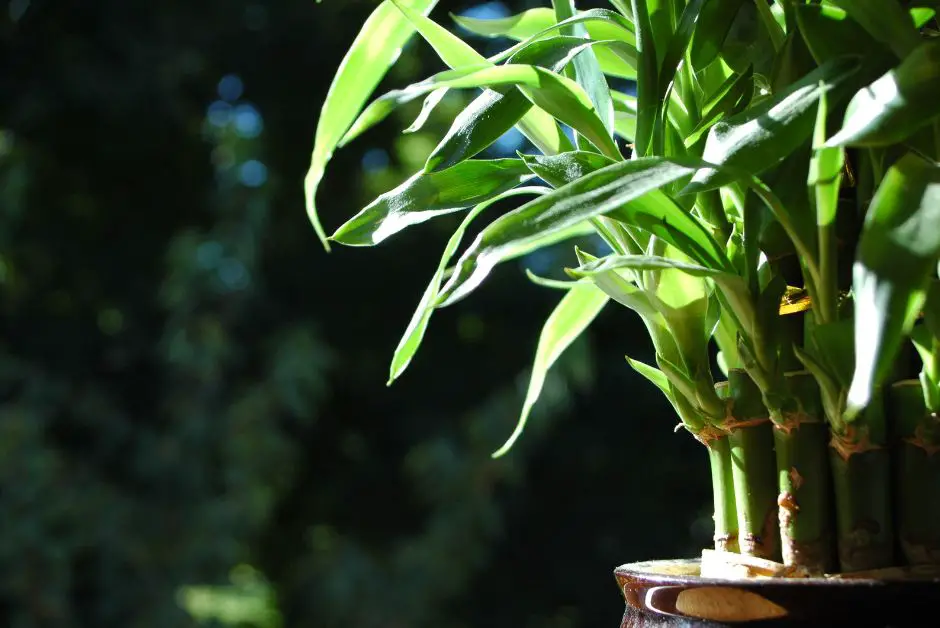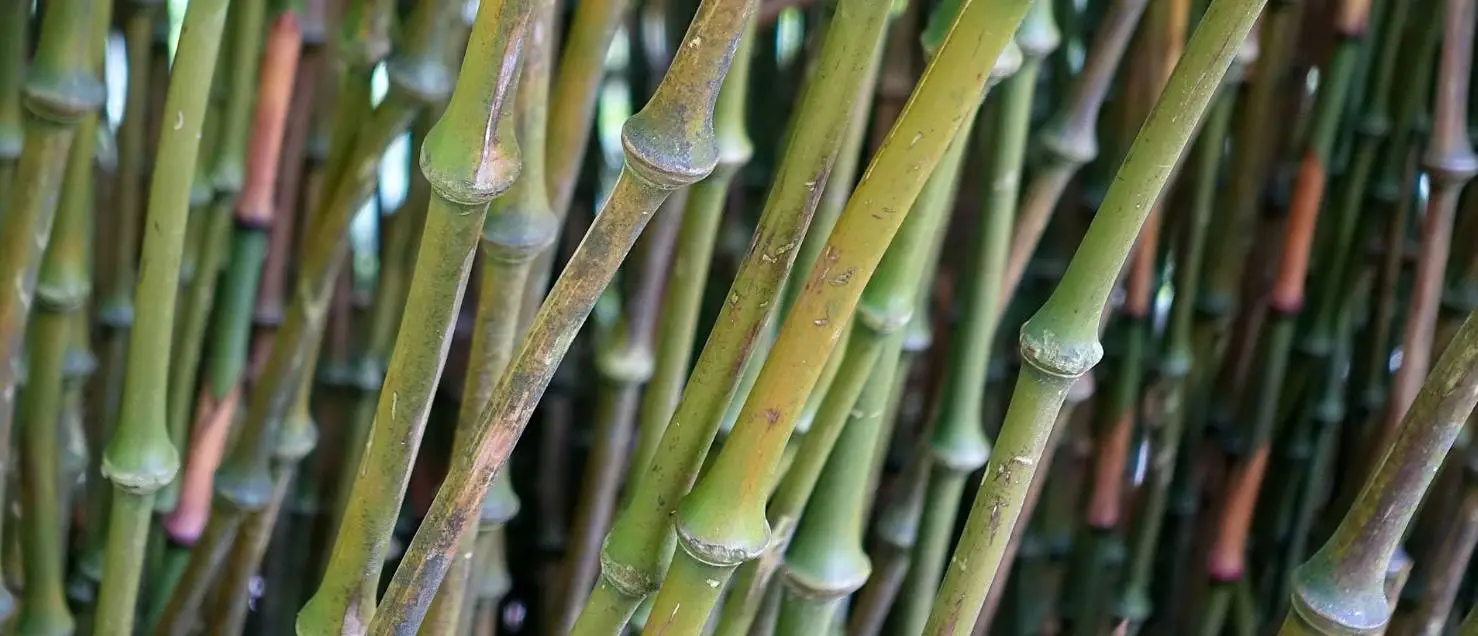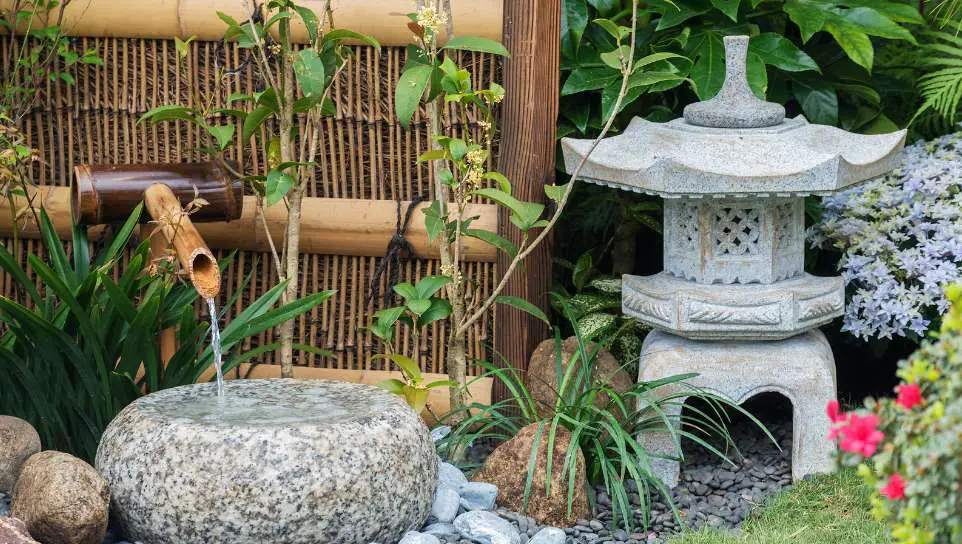In America, we cross our fingers for good luck. In Germany, they press their thumbs. Other cultures look for four-leaf clovers, carry severed rabbits’ feet, or hang horseshoes. And in Asia they plant bamboo. The world over, people are always seeking lucky charms to bring favor and fortune into their lives. From physical gestures to religious icons to living (or at least one-time living) things, it’s in our nature to recognize potential blessings everywhere. And given bamboo’s many remarkable properties, it’s no surprise that people should associate it with good luck or even magic.
Bamboo has so many amazing characteristics, it’s only natural that we would identify it as a token of good luck. From its unsurpassed growth rate to its astonishing utility, bamboo—which includes more than 1,000 species of woody grasses— is possibly the most useful plant on earth. At the same time, we have a plant called “Lucky Bamboo”, which is actually Dracaena sanderiana and technically not a bamboo at all. Though they are not closely related, bamboo and lucky bamboo do share certain properties, and the capacity to bring good luck is just one of them.
Why is bamboo considered lucky?
If you’re a nature lover like me, you can find beauty, magic and even divinity in nearly all living things. But certain things in nature, like the life cycle of a butterfly or the integrity of a giant bamboo culm, are especially awe-inspiring.
Gardeners and botanists widely agree that bamboo is the fastest-growing plant on earth. Among many species, the fresh shoots offer a simple and abundant source of nutrition, while mature culms can provide a building material with a greater strength-to-weight ratio than steel.
Bamboo’s utility
People have been using bamboo for food, shelter and ornamental horticulture since roughly the dawn of human history. In fact, some of the first pages of history were probably inscribed in Chinese characters onto strips of bamboo.
Actually, the Chinese began keeping records and documenting history sometime around the Shang Dynasty, with the earliest evidence of writing on bamboo tracing back to about 1,500 BC. That’s an impressive legacy. And it’s just one example among hundreds or thousands of uses of bamboo that have been around for many centuries.
Of course, the ancient Chinese also used bamboo for making musical instruments, utensils, furniture, and other light construction. It’s impossible to say how early those activities began, but probably several thousand years ago, well before the invention of writing. And bamboo construction remains alive and well today, from the rustic scaffolding used all over Asia to the engineered bamboo that’s lighting up the modern field of green architecture.
Bamboo’s supernatural size and strength
Nature is filled with edible plants, useful fibers and psychoactive fungus, but bamboo, often exceeding 100 feet in height, has a way of standing apart from the rest. That doesn’t make it the tallest plant in the forest, but the fact that those canes can achieve such a towering height in a single growing season does make bamboo something exceptional.
This fantastic growth rate means that bamboo poles are plentiful and abundant. But more importantly, they offer the strongest building material in the forest. And that’s not all. Bamboo, with the hollow culms characteristic of any grass, is unusually lightweight, flexible and easy to work with.
With this uniquely favorable combination of traits, it’s no surprise that bamboo would be revered as a gift from the gods. Indeed, the legends and creation myths of the Far East abound with stories of bamboo and its many blessings. Inevitably, the hollow sections of bamboo contain some holy treasure, an imprisoned princess, a seed of life, or some other precious mystery.
Lucky bamboo is not true bamboo
Despite bamboo’s most incredible and seemingly supernatural properties, the popular plant commonly known as Lucky Bamboo is not actually bamboo at all. Dracaena sanderiana is a closer relative to common asparagus than to any member of the grass family, Poaceae. Asparagus has some distinguishing traits of its own, like being one of the only perennial vegetables, along with artichokes. But that’s got nothing to do with Dracaena‘s luckiness.
Feng Shui experts (see below) consider Dracaena sanderiana one of the most favorable houseplants for inviting prosperity and promoting a good flow of Chi. And the fact is, Lucky Bamboo is one of the easiest of all houseplants to grow and maintain.
Unlike true bamboo, you need only place a few stalks into a vase or a pitcher of clean water, and the Lucky Bamboo will thrive for many months or even years without soil. In other words, it’s impossible to overwater, which is the leading cause of death among houseplants. And if you’re worried about who will water your plants while you’re on vacation, relax, the Lucky Bamboo with be just fine. Just top off the vase, and they’ll have plenty to drink for at least a couple of weeks.
These plants are perfect in places where other specimens tend to languish from neglect or from lack of sunlight, such as bathrooms or office cubicles. After all, whose office cubicle couldn’t stand to benefit from an extra bit of good luck?

And to make them even luckier, most florists and nurseries display and sell their Dracaena sanderiana in ornamental containers with auspicious Chinese characters or other Eastern symbols. Even if you’re a skeptic, what have you got to lose?
The most auspicious species of bamboo
There’s nothing wrong with accenting your interior landscape with some Dracaena sanderiana. But if you want to enhance your fortune with some true bamboo, consider some of the following species. Of course, there’s no scientific evidence to measure the luckiness of any particular species of bamboo, but these are some undeniably fortuitous varieties.
Bambusa oldhammi
Sometimes called Giant Timber Bamboo, this is one of the most popular bamboo varieties in all of North America, especially in the milder climates. Oldham’s is one of the more versatile timber bamboos of this genus, hardy to about 20º F. Mature groves can get 50-60 feet tall, with 4 inch thick culms. The majestic, upright culms have a rich yellow color. These plants make for beautiful specimens or centerpieces but are also very effective as privacy screens. The poles, thick and resilient, are also well-suited for building and light construction.
Bambusa ventricosa (Buddha’s Belly Bamboo)
This popular variety has bulging internodes that make for a remarkable appearance. The bulges resemble little bellies, hence the name. And the association with Buddha makes it a natural choice for bringing luck. Ideal as a specimen plant or focal point in the garden, the interesting, deep green culms can grow 20-30 feet tall and 2-3 inches thick. To encourage more bulbous internodes, you can top the culms every year and stress the plant by under-watering it slightly.
Chimonobambusa tumidissinoda (Walking stick bamboo)
Also known as Qiongzhuea tumidinoda in China, this is a less common species of bamboo but one of the more easily recognizable. In addition to its distinctively prominent nodes, this bamboo also has very graceful foliage, arching at the tops with small, delicate leaves. Plants can grow 5-15 feet tall, with nodes about 1 inch thick. It prefers at least some shade and is cold hardy to about 5º-10º F. Given their interesting appearance, the poles look lovely in the garden and are also useful for a variety of crafts, including (but not limited to) walking sticks.

Phyllostachys nigra (Black Bamboo)
The distinctively dark brown (not quite black) shoots make this one of the most highly sought-after strains of bamboo, and any nursery that sells bamboo is likely to have some of this on hand. As the plant matures, the dark color of the culms grows richer, making for a very attractive contrast against the bright green leaves. Unlike the ‘Henon’ cultivar below, this variety only gets about 2 inches thick and 20-30 feet tall. Hardy to about 5º F.

Phyllostachys nigra ‘Henon’
Giant Gray, as it’s known, is a giant timber species and a cultivar of the popular Black Bamboo. Unlike the common Ph. nigra, this variety has beautiful, towering, greenish-gray culms that can get up to 50 or 60 feet tall and more than 4 inches thick, but typically not as thick as Ph. bambusoides or Ph. vivax. If size has anything to do with promoting good fortune, then this is the bamboo for you. It’s especially popular on the West Coast, where it performs much better than Moso and Madake. Cold hardy to -5º or -10º F.
Bamboo and Feng Shui
In addition to enhancing the garden, bamboo can also play a role in interior design. The ancient Chinese philosophy and practice of Feng Shui focuses on achieving balance and harmony within interior living spaces. Bamboo, with its hollow stems, is believed to support the movement of positive energy within homes, bringing abundance, prosperity and wealth.
In some cases, bamboo can be added to the home decor as a houseplant. More often this is done with Lucky Bamboo, because growing true bamboo indoors can be tricky.
Equally, bamboo can be used as part of the fixtures and fittings to help bring harmony and enrich your life. For example, a bamboo screen can be incorporated as a natural way to separate a lounge from a kitchen area. You can also include furniture made from bamboo and look to source sustainable bamboo flooring options for hallways and entrances.

According to Feng Shui, the use of bamboo in the home can achieve a variety of benefits, based on where it is placed. Careful consideration and placement of bamboo within your interior design can, according to the principles of Feng Shui, bring promote wealth, abundant relationships and family harmony.
Bamboo in the wealth corner of your room is traditionally associated with financial success. The wealth corner is traditionally known as the Xun position of your home and is located in the far-left corner of your space when you are facing your entrance. By contrast, placing bamboo in the Kun, or relationship corner of your living space, is believed to promote harmonious romantic relationships. For many people looking to use Feng Shui principles in interior decor, a bamboo screen, or two stalks of bamboo placed in a vase in the Kun corner of the bedroom is an attractive way to benefit from the ancient philosophy.
Other plants that could bring good fortune
While you’re cultivating bamboo for good luck, here are a few other plants to consider for more positive energy.
Pachira aquatica or Money Tree
As the common name clearly indicates, the Pachira aquatica or Guiana chestnut is traditionally believed to encourage financial prosperity. It’s an elegant and attractive houseplant, but somewhat more finicky in terms of water and sunlight requirements.
Crassula ovata or Jade Plant
These easy-to-maintain succulents do well outdoors in shade or sun, or indoors in a bright window. As succulents, they thrive on neglect. Poor, sandy soil is perfectly fine. And if you forget to water for a few weeks, no problem. Just don’t over-water them.
Bonsai trees
These miniature trees have such a distinctive charm about them, it’s obvious that they should be a source of good luck. Typically they do better outside than inside, on a shady patio for example. Junipers are some of the easier trees to maintain as a bonsai. Otherwise, they can be pretty tricky. You can also try doubling your luck by planting a bamboo bonsai.
Conclusion
Understandably, there’s some confusion and even skepticism about bamboo’s luckiness. How can the presence or absence of a certain plant, which may or may not belong to the grass family, affect your individual chances of success, either in business or in romance? The phenomenon of good fortune is not easy to explain. But the good news is that bamboo can bring good luck even if you don’t believe in it!
Further reading
If you liked reading about the lucky properties of bamboo, you might enjoy more articles from our blog. Check out some of the following posts about bamboo and other blessings.

























